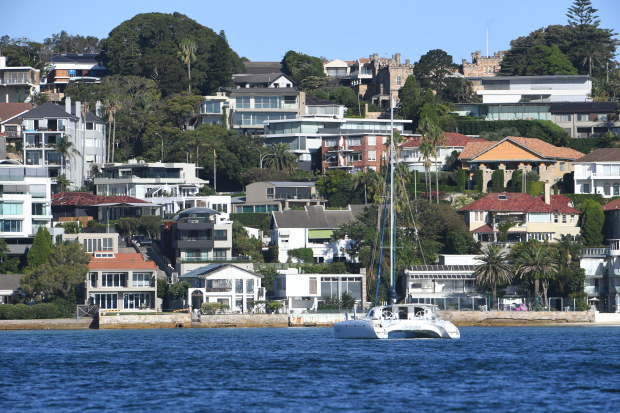The sum you need to make it into the top 1pc in Australia

Joining the top 1 per cent of wealthy Australians became easier last year as the country’s rich were hit with a weaker Aussie dollar and slowing economic growth.
Australians previously needed to have $US5.5 million ($8.41 million) to count themselves among Australia’s 1 per cent, but the threshold has dropped to US$4.67 million ($7.18 million), according a 2024 wealth report by global real estate consultancy Knight Frank.

Knight Frank predicted Sydney would lead the globe in the greatest increases in luxury residential rents this year, at 12 per cent. Peter Braig
“Australia now ranks seventh in the world for the money required to be in the top 1 per cent of wealthiest people, falling from its ranking of third last year,” the report’s authors said.
At the same time, despite cost of living pressures hitting the bulk of the population, the number of “ultra” wealthy in the country rose by 2.9 per cent to 15,347, as defined by holding more than $US30 million ($46 million). This was compared to a 4.2 per cent rise globally.
“We have high population growth, so it’s not surprising we have more wealthy individuals,” Knight Frank’s chief economist, Ben Burston, said. “We’re a very popular location.”
Knight Frank surveyed more than 600 private bankers, wealth advisers, intermediaries and family offices managing over $US3 trillion in wealth combined. According to the responses, Australia is the fourth most favourable place to buy a new home, behind the UK, the US and France.
While billionaires including venture capitalist Peter Thiel, who co-founded PayPal and was an early investor in Facebook, have long looked to buy property in New Zealand to hide out from an apocalypse, Knight Frank said global buyers were increasingly interested in retreats in Tasmania.

“Prime values along Hobart’s Derwent River are up 142 per cent over the past decade,” Knight Frank’s Michelle Ciesielski said. “Those seeking a better work-life balance and less exposure to climate risk are attracted by the opportunity to design a modern, sustainable home.”
The report also compared what $US1 million worth of prime property bought in terms of square metres in cities around the world. In Sydney $US1 million will buy 43 square metres of prime property, compared to 22 square metres in Hong Kong, 33 in London and 64 in Tokyo.
Knight Frank predicted Sydney would lead the globe in the greatest increases in luxury residential rents this year, at 12 per cent – double the predicted growth in the next fastest growing market, Auckland, New Zealand.
The result demonstrates how tight the housing market is in Sydney. “Prime rents are moderating from their post-pandemic highs but a lack of stock in key cities will keep annual growth in positive figures for most advanced economies,” the report says.
Residential prime real estate prices in Sydney were forecast by Knight Frank to rise by 5 per cent in Sydney this year, and by 3 per cent in Melbourne.
Family office adviser Joel Cann, from Felix Bay Group, said stable banking markets and sophisticated capital markets were another drawcard for wealthy families.
“Unsurprisingly, Australia has a greater density of UHNW families compared to many other countries,” he said.
The Knight Frank report examined the performance of investment in luxury collectibles, such as art, jewellery, wine, furniture and cars, finding an estimated 20 per cent of ultra-high net worth portfolios were allocated to such asset classes.
Despite strong sales at auction for such items, Knight Frank’s index of their overall value went backwards by 1 per cent over 2023.
“[This was] pulled down by falling values in rare whisky (-9 per cent), classic cars (-6 per cent), handbags (-4 per cent) and furniture (-2 per cent),” the report says.
“While art (+11 per cent), jewellery (+8 per cent) and watches (+5 per cent) helped offset some of these falls, our assessment reveals a need for an ever more discerning approach from investors, with significant volatility by sub-market.”
Subscribe to gift this article
Gift 5 articles to anyone you choose each month when you subscribe.
Subscribe nowAlready a subscriber?
Introducing your Newsfeed
Follow the topics, people and companies that matter to you.
Find out moreRead More
Latest In People
Fetching latest articles